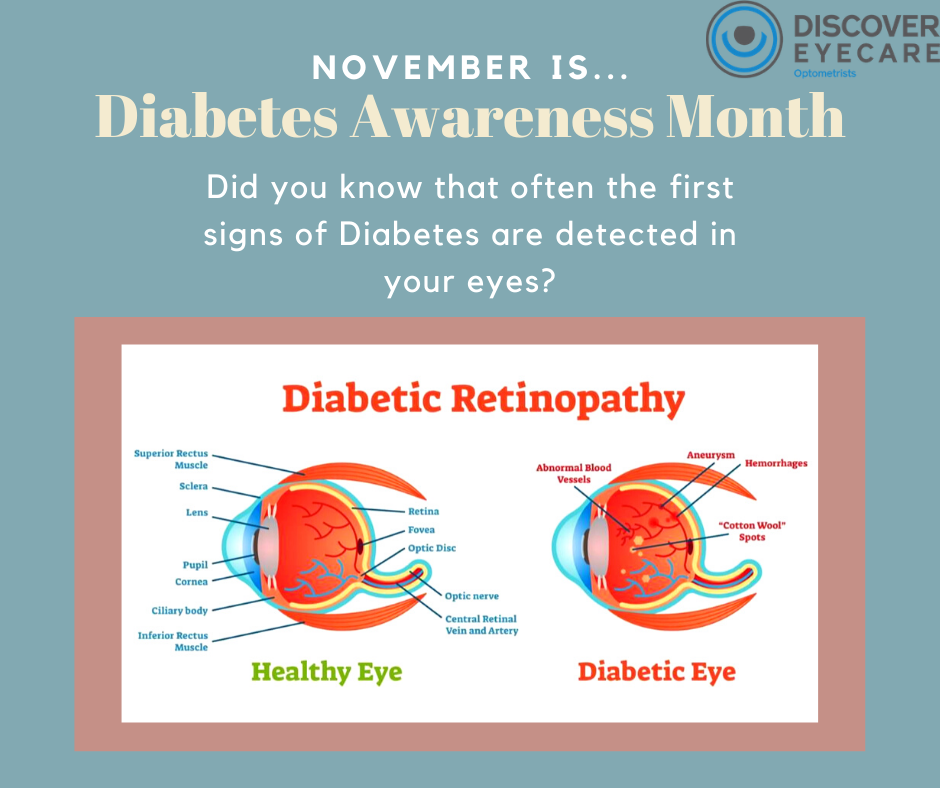November is Diabetes awareness month. A disease that affects 11 million Canadians. I’m sure you or someone you know has this disease. But did you know that often the first signs of Diabetes are detected in your eyes?
People with diabetes can develop something called Diabetic Retinopathy. This occurs when the blood vessels in the eyes leak blood or fluid, and new abnormal blood vessels form, which can damage the retina. This sadly can eventually lead to blindness. Early detection is extremely important in preventing serious complications. During your eye exam, your retina is screened for signs of diabetes. We also take a high-resolution image of your retina, so we can not only “zoom in” on your blood vessels and examine them with you, but we also can compare the images year to year looking for any changes. If there are signs of diabetic retinopathy, we will refer you to an ophthalmologist for treatment.
How is Diabetic Retinopathy treated?
In the early stages, your retina is monitored through regular eye health examinations at least every year. If it progresses, it may be treated with intraocular injections of anti-VEGF therapy (Lucentis or Avastin), or laser therapy. A bright beam of light is focused on the retina causing a laser burn that seals off the leaky blood vessel. Unfortunately, these burns also cause blind spots in our vision.



